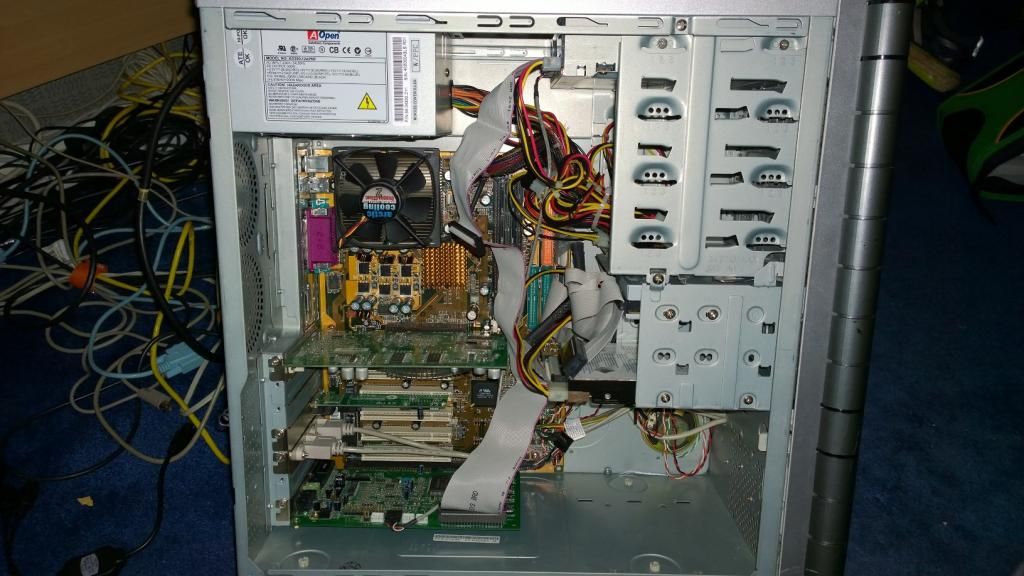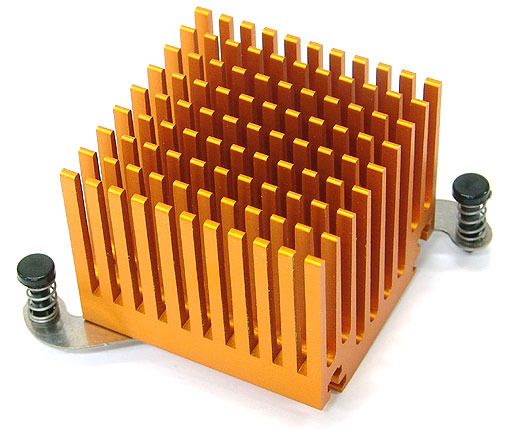Evert:
I was looking at your picture of your KT7A. The Athlon 1400 is a very hot chip. So-called "orb" coolers like yours were generally found to be less effective than traditional HSF's. I don't want to criticize your build, but if it were mine, I would replace that orb HSF with a better unit.
I have a pair of Antec's version of the orb called "Antec Twister". I run one on a P3-1000 Coppermine and the other on a Celeron 600. I wouldn't trust them on anything more powerful. They look nice, but I'm pretty sure they aren't the best coolers. P3's run relatively cool, so I'm not worried about this cooler in my Intel systems.
The Athlon 1400 also uses quite a bit of power. I'm sure you're fine with the 300W PSU you're using with the Voodoo 5, but I wouldn't try using anything more powerful than a GF3. Beyond that I would recommend a stronger PSU. If you want to stick with the 300W PSU and need more video horsepower, you could try a Radeon 9600XT which is comparable to the GF4 Ti4600 but only uses about 25% as much power. Of course, Radeon cards also have their own unique quirks...
Regarding your HSF's on the Voodoo 5: There are only a few choices available as replacements for the OEM coolers that don't require cutting or epoxy. Vantec has two that fit without any permanent modifications: CCB-A1A and CCB-A1C. You can read about a couple of folks who used those here. They've posted up pics of their cards so you can see what it looks like.
Unfortunately for me, I found that option a few years too late for my V5 cards. I used Evercool EC-VC-RE coolers on mine. One of them will fit without modification, but the second cooler doesn't match up with the V5's mounting holes so I had to use thermal epoxy on it. I regret this modification because it is permanent, but I don't plan to ever sell the cards anyway. I also rationalize it by reminding myself that the Evercool units are doing a better job.
brad1982_5:
I wish I had the skill and steady hands required to do my own recapping. Good luck with yours!
The v1.0 KT7A is a decent board; it just has a few quirks. For mine, I found that it didn't like to run with more than 512mb RAM and it also didn't like NVIDIA cards newer than GF4 Ti4600. It was fine with a Radeon 9600XT and 9800XT.
Now that it has 512mb RAM and a GF4 Ti4600 in it, it runs great! I'm actually using it as my primary legacy gaming machine right now. I also have a pair of Creative Voodoo 2 cards in it which work pretty well. This one has an AWE64 Value card in it, but my other three KT7A's all run AWE64 Gold cards. Personally, I can barely tell the difference between the Gold and Value versions. If I can get around to it, I'll snap some pics of this system and post 'em up.








